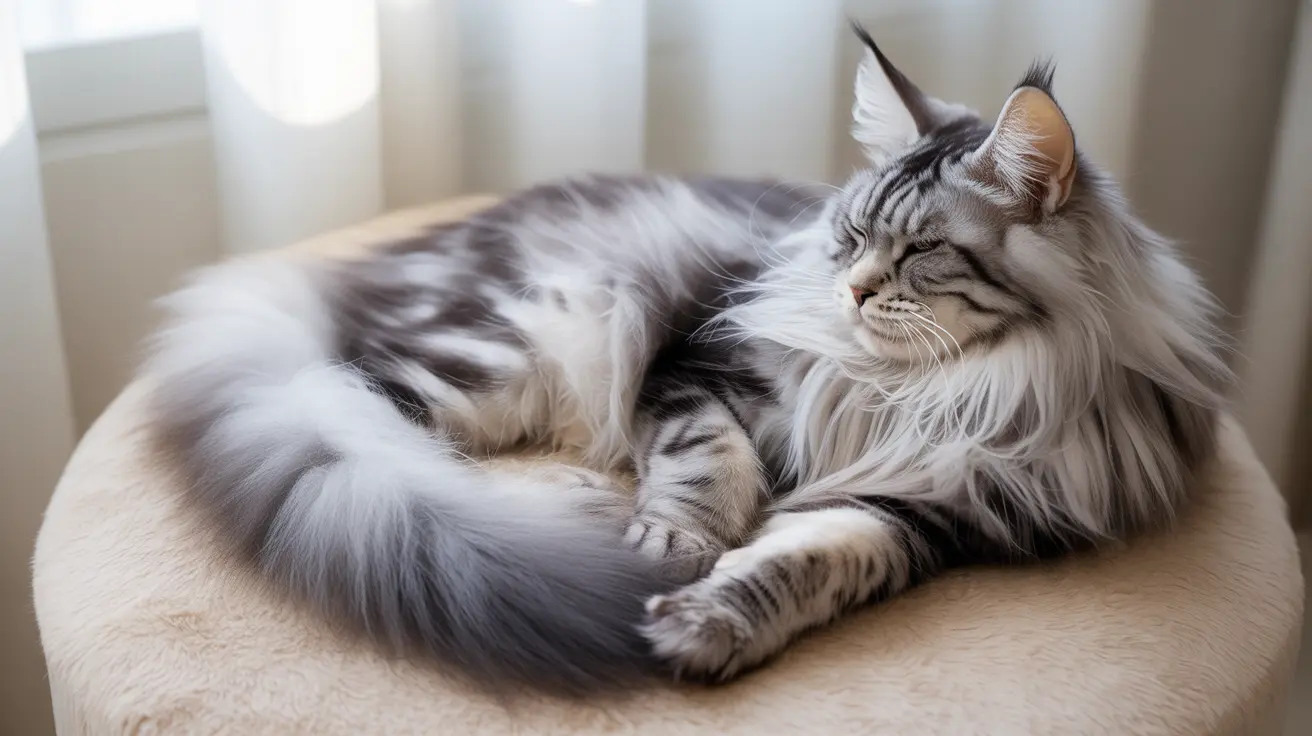Have you ever watched your feline friend curl up for a nap, only to see them adorably cover their face with their paws or tail? This charming behavior isn't just cute – it serves several important purposes rooted in feline instinct and physiology. Let's explore the fascinating reasons behind this common sleeping position and what it reveals about your cat's well-being.
Natural Protection and Security
When cats cover their faces during sleep, they're following an ancient instinct that helped their wild ancestors survive. The face, particularly the eyes and nose, contains some of a cat's most vulnerable features. By covering these areas, cats create a protective barrier against potential threats, even in the safety of your home.
This behavior also helps cats feel more secure, allowing them to achieve deeper, more restful sleep. Just as their wild counterparts needed to stay safe while resting, domestic cats maintain this inherent defensive position despite living in protected environments.
Temperature Regulation and Comfort
Cats maintain a higher body temperature than humans, typically ranging between 101.0 to 102.5°F (38.3 to 39.2°C). By covering their faces while sleeping, they help preserve valuable body heat, especially around their sensitive nose and facial areas.
This behavior becomes particularly noticeable during colder months or in air-conditioned spaces. The position creates a small pocket of warm air around their face, helping them maintain optimal body temperature during rest.
Blocking Environmental Stimuli
Cats have incredibly sensitive senses, particularly when it comes to light and sound. Covering their faces helps filter out bright light, especially during daytime naps. This natural light-blocking technique is similar to humans using sleep masks for better rest.
Additionally, this position can help muffle surrounding noises, creating a more peaceful sleeping environment. This is particularly beneficial for cats living in busy households or urban areas with frequent ambient noise.
Sleep Quality and Cycles
When a cat covers their face while sleeping, it often indicates they're entering a deeper sleep phase. Cats spend about 15% of their sleep time in REM (Rapid Eye Movement) sleep, during which they're most vulnerable and need the most protection.
Adult cats typically sleep 12-16 hours daily, making quality rest essential for their health and well-being. The face-covering position helps them achieve the deep, uninterrupted sleep they need to stay healthy and alert.
Signs of Trust and Contentment
When cats feel safe enough to cover their faces while sleeping, it's often a sign that they're completely comfortable in their environment. This vulnerable position indicates they trust their surroundings and feel secure enough to let their guard down fully.
Frequently Asked Questions
Why do cats cover their face with their paws or tail when they sleep?
Cats cover their faces while sleeping to protect vulnerable areas, regulate body temperature, and block out light and noise. This behavior is both instinctual and practical, helping them feel secure and comfortable during rest.
Does covering their face help cats stay warm while sleeping?
Yes, covering their face helps cats maintain body heat, especially around their sensitive nose and facial areas. This behavior is particularly important in cooler environments or during winter months.
Is face-covering a sign that my cat feels safe and secure?
Yes, when cats cover their faces while sleeping, it typically indicates they feel safe and comfortable in their environment. This vulnerable position shows they trust their surroundings enough to let their guard down.
Do cats cover their faces to block out light or noise during naps?
Yes, covering their faces helps cats filter out bright light and muffle ambient noise, creating a more peaceful sleeping environment that promotes better rest.
Could covering their face indicate my cat is in a deeper or dreaming sleep?
Yes, face-covering often indicates that a cat has entered a deeper sleep phase, possibly REM sleep. During this time, they're more vulnerable and seek additional protection and comfort.
Final Thoughts
Understanding why cats cover their faces while sleeping helps us appreciate the complex instincts and behaviors that make our feline friends unique. This adorable habit serves multiple practical purposes, from protection to comfort, and indicates a happy, secure cat. Next time you see your cat sleeping with their face covered, you'll know they're not just being cute – they're following their natural instincts to ensure safe, comfortable rest.






